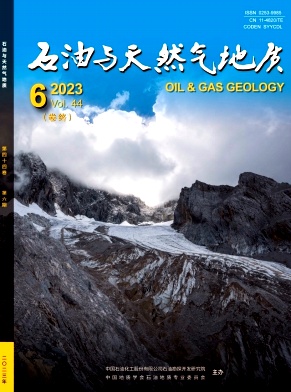Tectonic evolution analysis constrained jointly by in-situ calcite U-Pb dating and apatite fission track for southwestern Ordos Basin
Q1 Earth and Planetary Sciences
引用次数: 0
Abstract
The lower Paleozoic strata of Ordos Basin is rich in oil and gas resources. The Lower Paleozoic marine carbonate in the southwestern Ordos Basin is characterized by large thickness and high abundance of organic matter. The source rocks are in dry gas window.However, the tectonic evolution has not been well evaluated. The timing of the earlier tectonic events is a key scientific problem and needs to be addressed timely.In this study, under the constraints of detailed field investigations, microstructure characteristics, in-situ trace element analysis and regional deposition-burial evolution history, the secondary calcite in-situ U-Pb dating is combined with apatite fission-track time-temperature simulation curves of the Lower Paleozoic carbonate strata and its fault facture zone to reveal four tectonic events including the Late Ordovician, Late Triassic, Late Jurassic and end of the Early Cretaceous-Cenozoic.A hydrothermal event occurred at the Late Ordovician 452±13 Ma, which might be linked to the subduction and closure of the Proto-Tethys Ocean during the Caledonian period.A limited Indosinian tectono-thermal event occurred at 214±22 Ma, which might be caused by the regional fault movement.The intense tectonic activities during the Yanshanian and Himalayan periods induced a strong uplift and denudation.The southwestern Ordos Basin experienced multi-stage complex tectonic evolution and the caprock was seriously damaged, leaving rather unfavorable preservation conditions for hydrocarbon.This study conducts a novel tectonic evolution analysis by combining low-temperature thermochronology with in-situ U-Pb dating of fault-related calcite, providing a new way to analyze tectonic evolution and later transformation process at the margin of complex superimposed basins.鄂尔多斯盆地西南部原位方解石U-Pb测年和磷灰石裂变径迹联合约束下的构造演化分析
鄂尔多斯盆地下古生代地层油气资源丰富。鄂尔多斯盆地西南部下古生代海相碳酸盐岩具有厚度大、有机质丰度高的特点。烃源岩处于干气窗口。然而,构造演化尚未得到很好的评价。早期构造事件的时间安排是一个关键的科学问题,需要及时解决。本研究在详细的野外调查、微观结构特征、现场微量元素分析和区域沉积埋藏演化史的约束下,次生方解石原位U-Pb定年结合下古生代碳酸盐岩地层及其断裂带的磷灰石裂变轨迹时间-温度模拟曲线,揭示了晚奥陶世、晚三叠纪、晚侏罗纪和早白垩世新生代末四个构造事件,这可能与加里东期原特提斯洋的俯冲和闭合有关。在214±22Ma发生了一次有限的印支构造热事件,可能是区域断裂运动引起的。燕山期和喜马拉雅期强烈的构造活动诱发了强烈的抬升和剥蚀。鄂尔多斯盆地西南部经历了多阶段复杂构造演化,盖层破坏严重,油气保存条件较差。本研究将低温热年代学与断层相关方解石的原位U-Pb定年相结合,进行了一种新的构造演化分析,为分析复杂叠合盆地边缘的构造演化及其后期转化过程提供了一种全新的途径。
本文章由计算机程序翻译,如有差异,请以英文原文为准。
求助全文
约1分钟内获得全文
求助全文

 求助内容:
求助内容: 应助结果提醒方式:
应助结果提醒方式:


